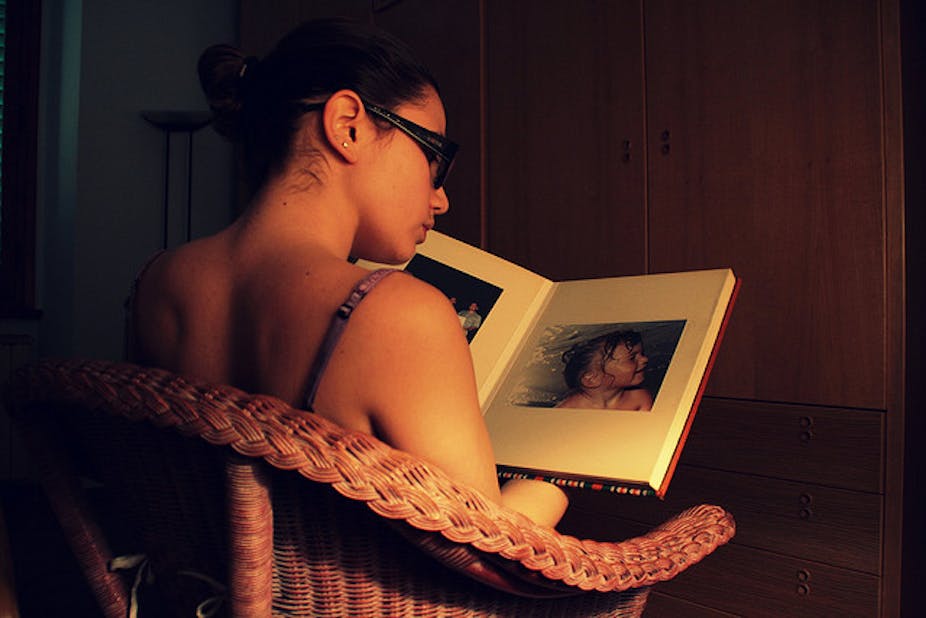The release last Wednesday of the Senate’s Community Affairs Committee report on forced adoption resulted in almost unanimous condemnation of past adoption practices which saw young, unmarried women forced to give their newborns up for adoption. The question on everybody’s lips was how such cruelty could have been allowed.
One day earlier, an unrelated Victorian report was released that provides a very different take on adoption. The Protecting Victoria’s Vulnerable Children report recommends, among other things, the removal of barriers to adoption. This would allow more children to be placed for adoption, rather than being sent back to troubled families.
It’s ironic that two reports are released within a day of each other – one looking back critically at practices that promoted adoption and one looking forward that wants to increase rates of adoption. So is there a risk that the mistakes of the past could be repeated?
Parenting potential
The Victorian Inquiry argues adoption provides a child with a certainty foster care lacks. Therefore, in situations where there is no suitable family member to care for the child, he or she should be freed more easily for adoption.
If the adoption process was easier, the report suggests, more carers would be brought in to the system to fill the shortfall of foster parents.
But these recommendations assume that child protection workers can judge future parenting potential. And history shows this isn’t the case.
When legal adoption was first debated in the 1920s, politicians were well aware of the seriousness of the step they were taking. They conceded that circumstances could quickly change in the birth family or adopted family. The birth parents may come into an inheritance, or dramatically turn their lives around and be able to parent. On the other hand, the adoptive parents may fall on hard times.
These doubts disappeared over time. Social workers grew increasingly confident that they could predict who would make the best parent. By the 1950s, it was their view that young, single mothers were not in a position to support their children. It was therefore better to immediately separate the mother and child so the “girl” could “get on with her life”. And the child would find a home with a respectable married couple.
The Senate Committee heard convincing evidence that such confidence was sadly misplaced. What social workers saw as professional expertise, mothers condemned as injustice. People who were taken from an untested mother and placed in a family that turned out to be neglectful or abusive asked how adoption could have been in their best interests.
Apologising for past errors
The Committee was careful not to imply that such experiences were universal. Nevertheless, it recommended Commonwealth and state governments, church and community organisations apologise to those whose lives were harmed by adoption.
Counselling, memorialisation services, programs to improve records access and financial redress should be jointly funded by all those involved. These recommendations parallel services offered in the wake of previous apologies, although the government rejected financial redress.
The Committee’s report puts this alternative story of adoption onto the public record but argues that this history should not be confined to the past: “All those involved in current adoption practices … [should] take the findings … into account.”
The Inquiry notes that inter-country adoption (adopting children from abroad) is creating “supply chains” in some countries that are similar to those that operated in Australia. Adoption agencies have established maternity homes where single mothers have no choice but to relinquish their children. The Victorian recommendations, if implemented, have the potential to do the same.
Future risks
The Victorian Inquiry found no legislative barriers to increasing the number of children who adopted out, and could not understand why adoption was not more widely used. Perhaps the answer lies in an institutional memory of the practices condemned by the Senate report.
Our society produces very few children with no parents or extended family, even if their care is manifestly inadequate. What it does produce are families with multi-generational histories of poverty, neglect and abuse which leaves a legacy of the mental illness and substance abuse which lie at the base of most of the intransigent child protection cases.
And although these parents struggle with multiple problems, and are judged as a risk to their children, they don’t want to relinquish their parental rights.
A second danger is that freeing children for adoption would generate a demand, pressuring child protection workers to increase the supply.
Many of the problems of post-war new baby adoption arose from its very success. As more potential parents lined up at adoption agencies, social workers, consciously or unconsciously, increased the pressure on single mothers to consent to adoption. When mothers resisted, this pressure often moved towards coercion or even illegality.
We know that there is greater demand among adoptive parents for younger children. So what guarantees do we have that social workers will not succumb to similar pressure today? As the list of potential adoptive parents grows, it will not be easy to defend the right of a woman, whose other children are already in care, to have the chance to mother her new baby.
There’s no doubt that both children who cannot safely remain with their own families – and the substitute families who are prepared to offer them a home – need greater security than the child protection system is currently able to offer.
But does this justify the absolute break that adoption involves? Do social workers now possess the skills to decide unequivocally who will be the best parent for a child?
They certainly believed they did in the past, but the findings of the Senate report have shown conclusively that in too many cases they were wrong.

